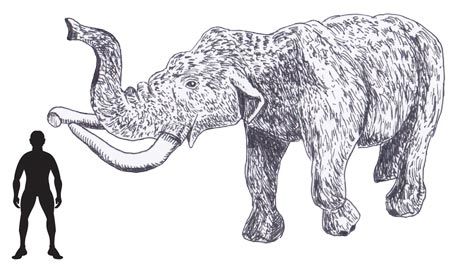Scientists Leave Ziegler Dam Site to Engineers
It’s a wrap, literally, as the last of the Ice Age fossils found at the Ziegler Dam location in Colorado are carefully wrapped in preparation for their journey to the Denver Museum of Nature and Science. The excavation, the second part of the dig, after the first studies were curtailed by heavy snow falls last Autumn, came to an end on Friday and the researchers, scientists and fieldworkers began to depart over the weekend.
Scientists from the museum, have been working at the site close to Snowmass Village which is believed to be the largest deposit of Ice Age fossils in North America yet discovered. The first fossils were found last October as a bulldozer driver working on the extension to the reservoir uncovered some large fossilised bones.
Scientists quickly moved in and began excavating the fossils from what they believe is the site of a former Ice Age lake. They worked until mid-November, but had to halt activities when the area began receiving heavy snowfall. Then an agreement was reached with the construction company to permit the scientists to return in the late Spring to remove as many bones as they could before the engineering work could move ahead.
Ice Age Fossils
In their first time at the dig site, the scientists, fieldworkers and volunteers recovered portions of eight to ten Mastodons, four Mammoths, four Giant Bison, two fossilised Deer and the remains of a Giant Ground Sloth. We at Everything Dinosaur have followed the work up at Snowmass Village and we have reported regularly on the team’s progress.
The First Discoveries: Huge Prehistoric Bison Skull Discovered in Colorado.
Agreement is reached to continue the excavations: Agreement is Reached to Permit Scientists to Continue their Work.
The Research Continues: Researchers Ready to Return to the Ice Age.
In the second round of excavations, crews discovered many more bones, recovering a grand total of 4,517 fossils from twenty different animals, including additional Mastodon, Mammoth, Bison and Deer bones. They also discovered Camel, Otter, Muskrat, Bat, Rabbit and bird skeletons, among many others, providing scientists with a rare insight into the fauna of this area over the last fifty thousand years.
Crews from the museum moved out of the area on Friday in order to allow construction on the dam to continue. However, a few scientists will remain behind to make sure any additional bones that are discovered are safely transported to the Museum of Nature and Science’s Fossil Preparation Laboratory. Scientists say they are confident the technique they used when excavating the site means the majority of the bones have already been found.
A Scale Drawing of an American Mastodon
Picture credit: Everything Dinosaur
Fossil Site
Kirk Johnson, the Chief Curator and Vice President of the research and collections at the Denver based museum stated:
“The key thing to realise is that the fossils are in the lake bed sediments, and we know exactly where the lake bed sediments end and where the rest of the lake begins, so we’re basically scooping out the sediments. When we finish scooping out the sediments, we’ve basically removed all possibility of finding bones.”
Some of the bones scientists are working with are quite large and the next step is to get all of the fossils back to Denver.
Johnson added:
“We’ve got one gigantic fossil that is in a giant plaster jacket that probably weighs in the vicinity of 10,000 pounds. So that’s going to be a real fun one to move.”
A crane will be required to remove that item. Forty-five additional large, plaster-wrapped fossils, weighing anywhere from 100 to 700 pounds, will be brought to Denver on a flat bed truck. Smaller fossils have been transported to Denver in museum vehicles throughout the course of the dig, some of which Johnson says are already on display in the window of the Fossil Preparation Laboratory.
However, visitors will not have to wait much longer to catch a glimpse of some of the larger finds.
Commenting on the work ahead of the scientists, Johnson said:
“I would say like middle of July you should start seeing big Snowmass fossils in the fossil prep lab window. We’ll probably get some down to the main floor of the museum as well because some of these fossils are too big to get up to the prep lab. So, it’s going to be an ongoing exciting process that you’ll be able to watch unfold in the museum starting in a couple weeks, and lasting for many months.”
The whole project has been a triumph for the museum and its staff and much credit must also go to the construction company and engineers, without whose co-operation many of the fossils, perhaps some of the most important Ice Age fossils ever found in the United States would have been lost forever when the reservoir was extended.
For models and replicas of Ice Age animals including prehistoric elephants: Eofauna Scientific Research Models.







Leave A Comment